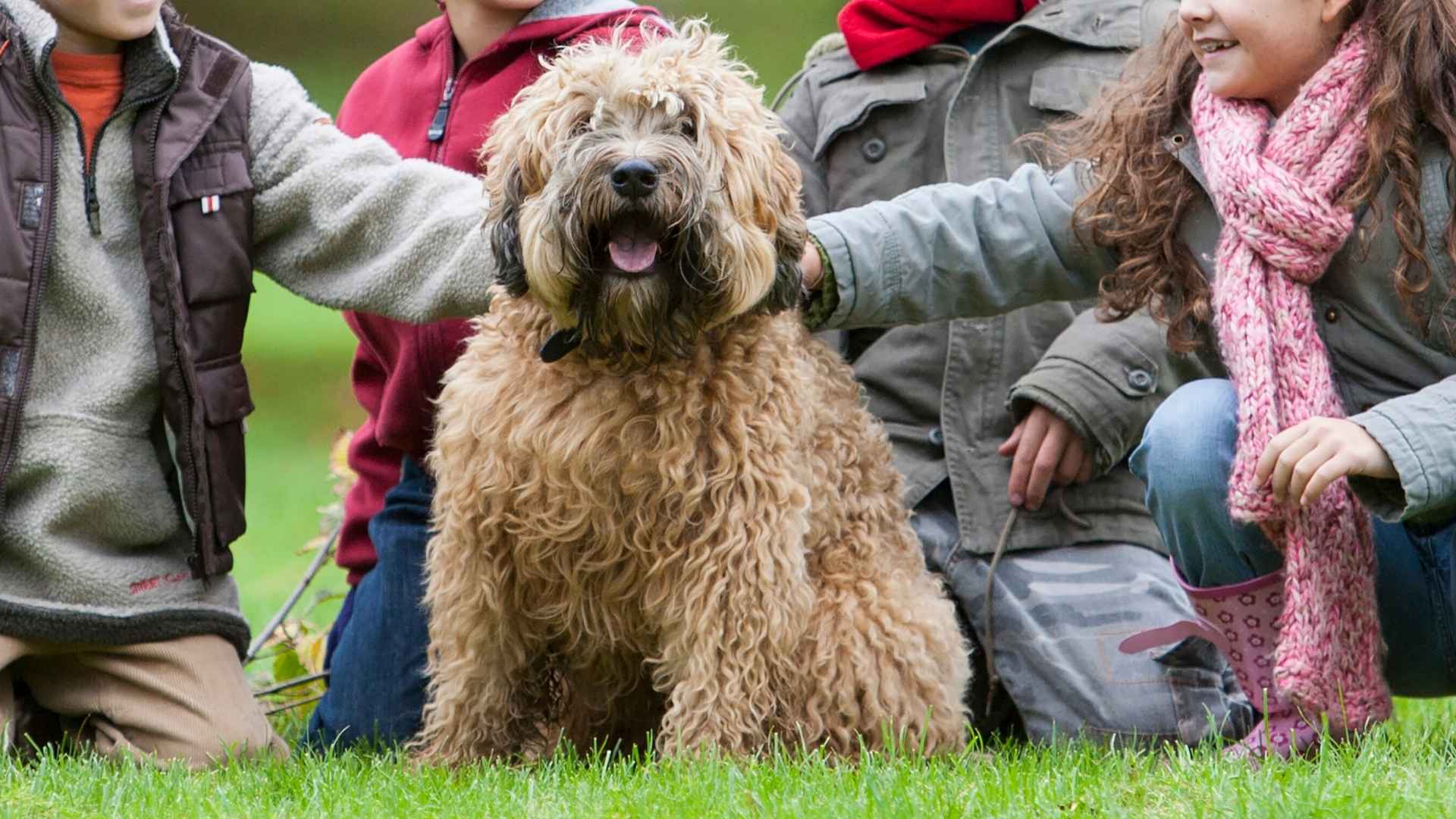Looking for a dog that’s smart, loyal, and great with the whole family? Herding breeds might just be your perfect match. Originally bred to round up livestock, these dogs now thrive in homes where there’s plenty of love—and maybe a little chaos—to keep them busy. They’re not just hard workers; they’re heart-stealers, too.
What makes these pups stand out? It’s their razor-sharp intelligence and natural instinct to protect. They’ll bond closely with your family, keeping a watchful eye while still being gentle with kids. And the best part? They’re eager to please, which makes training a breeze—well, most of the time!
These dogs crave purpose, so they’re happiest when they have something to “do,” even if that’s just herding the kids around the living room. If you’re looking for a four-legged family member who’s active, affectionate, and incredibly intuitive, you’re in the right place. Ready to meet them? Let’s dive in.
Family Herding Dog Breeds
1. Bearded Collie
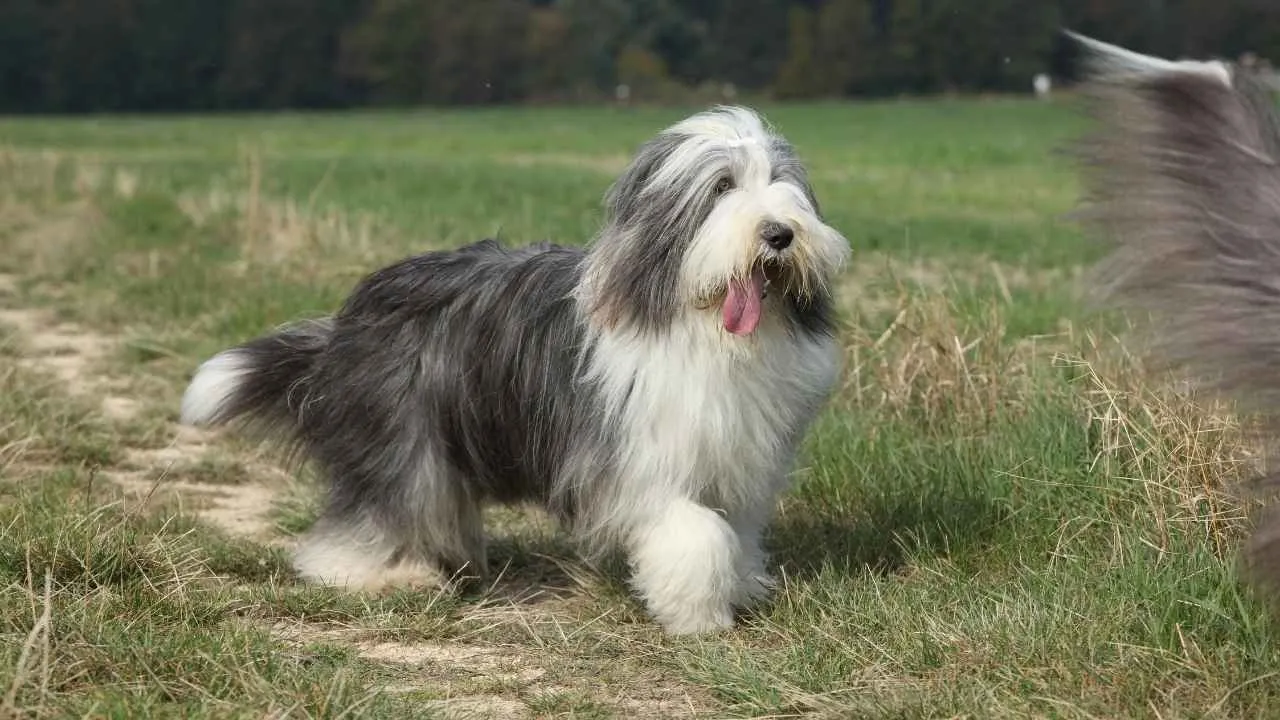
Ever heard of a dog that looks like a shaggy mop but moves like a windstorm? Meet the Bearded Collie—aka the “Beardie”—a herding breed that’s as spirited as it is sweet-natured. Originally bred to handle Scottish highland sheep in rough, rainy terrain, this dog is built for both work and warmth. And yes, all that hair comes with some serious heart.
When it comes to family life, Bearded Collies are total charmers. They’re affectionate dogs without being clingy, and playful without being over-the-top wild. They bond fast with kids and love being smack-dab in the middle of all the action. Got a busy household? This pup’s energy will fit right in.
Now, about that energy—it’s next-level. Bearded Collies need daily exercise, not just a stroll around the block. Think long walks, fetch marathons, or even agility courses. Without proper outlets, they’ll invent their own “fun,” like rearranging your couch cushions or herding your guests.
One thing Beardies are known for is their optimism. Seriously. These dogs have a bouncy, tail-wagging, “life-is-good” vibe that’s totally contagious. Even on gloomy days, they’ll find a reason to wag. Not exactly a guard dog, but they’ll alert you when someone’s at the door—usually with enthusiastic barking.
Training a Bearded Collie? Better bring patience and a few good laughs. They’re wicked intelligent but a little stubborn, says CKC. They respond best to upbeat, reward-based methods. Turn it into a game and you’ve got their attention. Be firm but fun—this dog doesn’t do boring.
Fun Fact:
Did you know Bearded Collies are sometimes called “bouncing Beardies”? That’s because when herding, they’ll literally bounce up and down in tall grass to spot their flock. It’s like their own built-in radar system—adorable and effective!
2. Cardigan Welsh Corgi
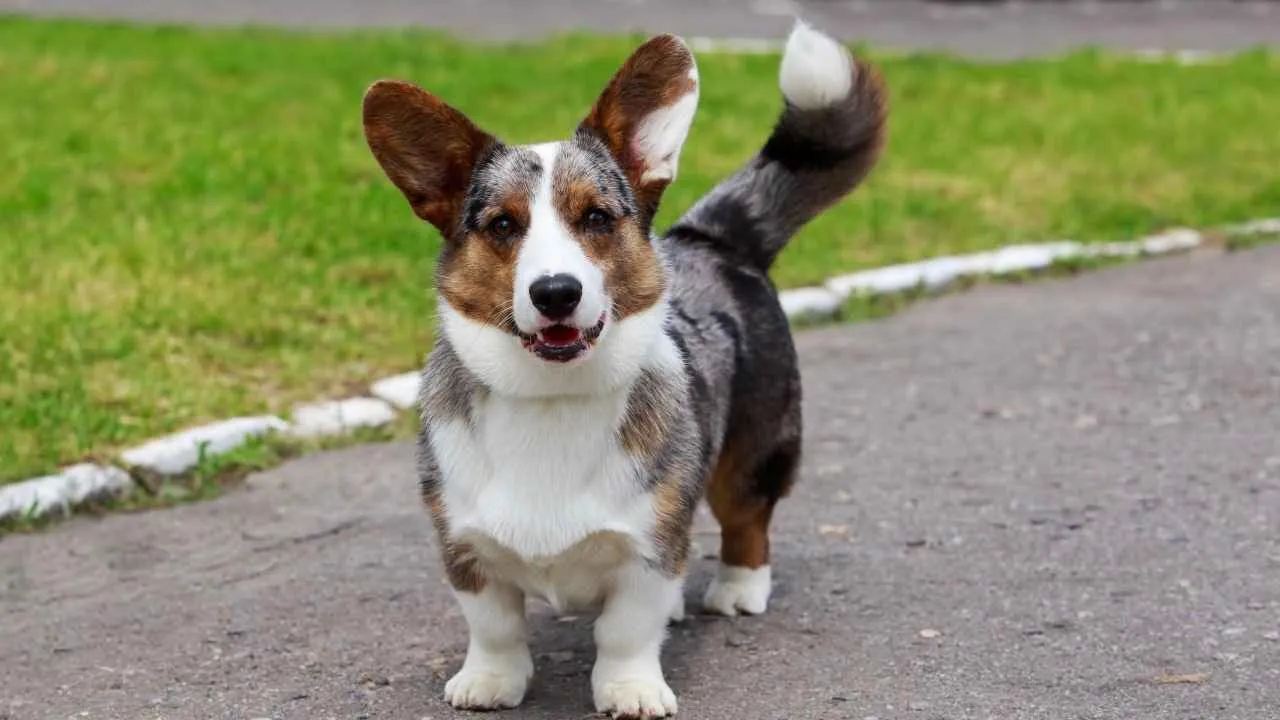
Cardigans were originally bred to herd cattle through rough, rocky terrain in Wales, using their low build to dodge kicks and stay fast on their feet. So, yeah—they’re compact, but absolutely fearless. In a family home, they shift gears into loyal companions who love to keep tabs on everyone, kids especially.
Despite their size, these dogs are surprisingly athletic. Don’t let the stumpy legs fool you—they’re fast, agile, and built to herd anything that moves. Got toddlers running around? Your Cardigan might just start organizing them like livestock in the backyard.
Where they really shine in family life is their balanced temperament. They’re not overly hyper, but they’re not couch potatoes either. They’re cool with a game of chase one minute and then happy to snooze next to you while you watch TV. It’s that perfect middle ground for busy households.
Here’s the kicker: Cardigans are super smart. Like, scary smart and intelligent, says Omlet. They pick up on routines, moods, and commands with lightning speed. But with that smarts comes a touch of sass. These pups have opinions, and they won’t hesitate to let you know if they think your rules are a bit… off.
They also have a protective streak. While they’re not aggressive, Cardigans make excellent little watchdogs. They’ll bark to let you know someone’s at the door or if they sense something out of place. It’s not excessive, but it’s effective—like a furry little alarm system.
3. Finnish Lapphund
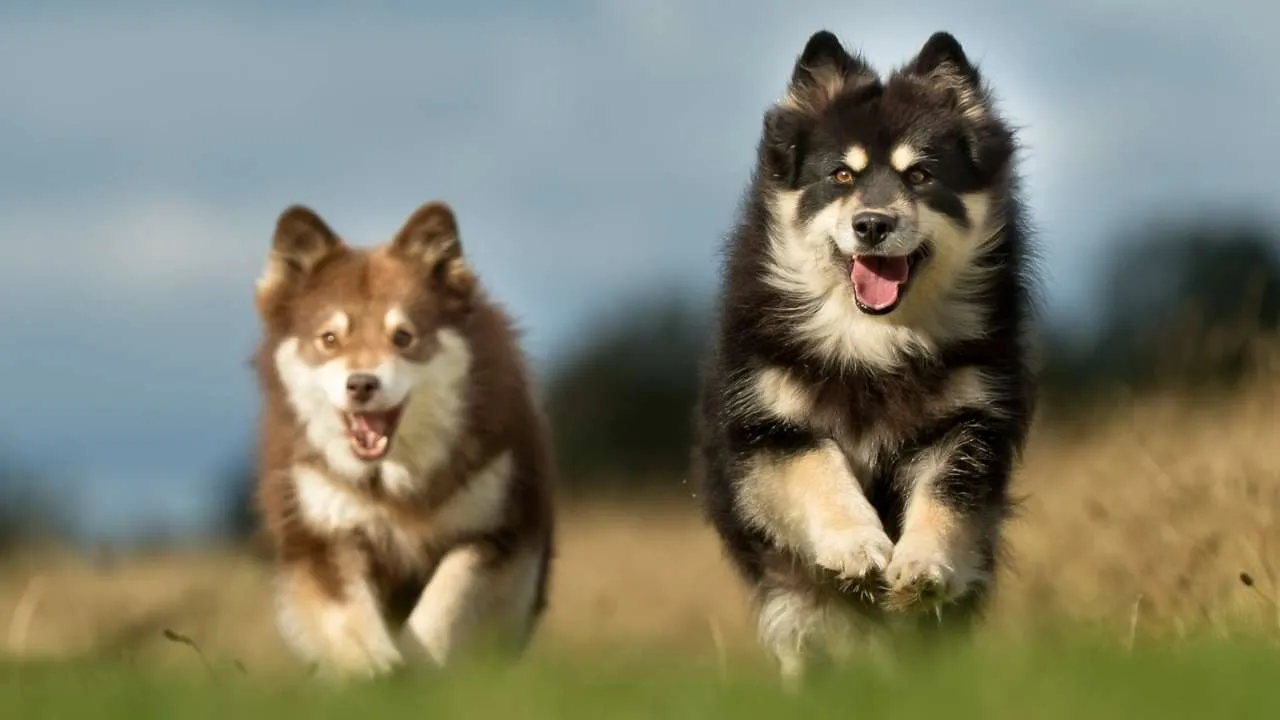
If you’re dreaming of a dog that combines arctic toughness with family-friendly sweetness, the Finnish Lapphund might just melt your heart. Originally bred by the Sámi people to herd reindeer in the freezing wilds of Lapland, this breed is a snow-loving, people-pleasing powerhouse wrapped in a fluffy coat.
Now, let’s talk herding. While they may not be chasing sheep in your backyard, their instincts are still strong. They often “round up” the household, keeping an eye on the kids and gently guiding them, usually without being pushy. It’s subtle, but it’s there. You might even catch them positioning themselves strategically to “manage” the family.
Finnish Lapphunds are famously gentle with children, says VCA. They’re calm, patient, and rarely reactive, which makes them a solid choice for families with toddlers or kids who are still learning how to interact with pets. They don’t overwhelm with energy, but they love to play—especially outdoors.
One of the most unique things about this breed is their startling vocal range. Yep, they’re talkers. But it’s not just barking—you’ll get howls, murmurs, and the occasional odd grumble, especially when they’re excited. Not obnoxious, just… expressive. It’s like having a furry little commentator in the house.
When it comes to training, they’re eager to please, but they have a streak of independence. They do best with kind, reward-based methods and a bit of variety. These dogs were bred to think on their own in vast snowy landscapes, so they’re not wired for mindless obedience.
4. Icelandic Sheepdog
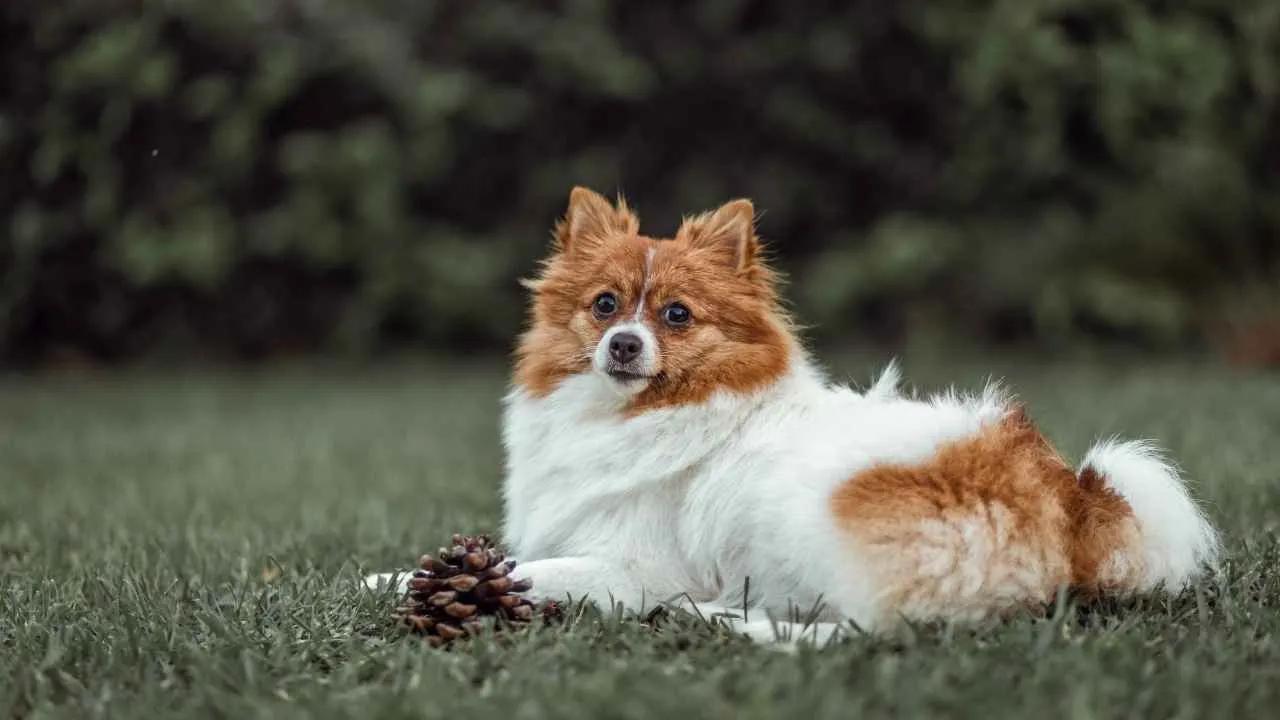
Originally used to herd sheep and protect livestock in Iceland’s unforgiving terrain, this breed had to be smart, tough, and loyal. Fast forward to today, and those same traits make them excellent family dogs. They’re sturdy enough for kids, alert enough to keep an eye on things, and affectionate enough to make everyone feel like their favorite human.
You know those dogs that look like they’re always smiling? That’s the Icelandic Sheepdog. Their bright expression matches their personality—they’re curious, upbeat, and ridiculously good with kids. WebMD states that they’re gentle but energetic, and they’re happiest when they’re in the middle of whatever the family’s doing.
But don’t be fooled by their fluff and friendliness—this dog loves a job. Whether it’s learning tricks, fetching a ball, or herding everyone into one room (yes, really), the Icelandic Sheepdog wants to stay busy. They thrive in homes where there’s movement, laughter, and a little chaos. Sounds like a typical family, right?
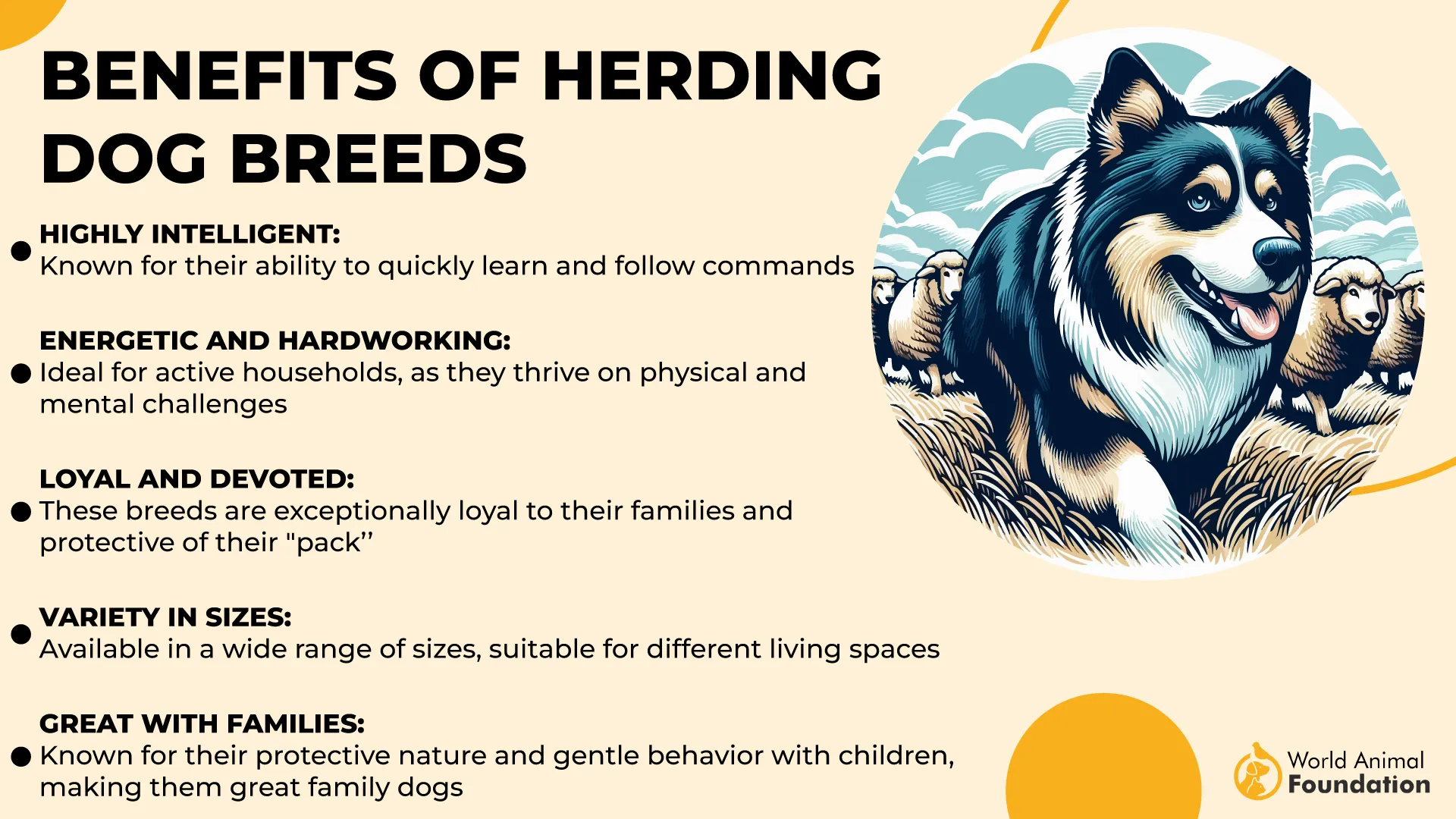
These dogs are vocal, but not in an annoying way. They’re more like enthusiastic commentators who feel the need to announce the mailman’s arrival or celebrate dinner time with a bark. It’s part of their watchdog nature—they’ll let you know what’s up, but they’re not aggressive about it.
What really sets them apart from other herding breeds is their adaptability. They’re cool with apartment life if they get enough exercise, but they absolutely light up with access to a yard. Daily playtime, walks, and a bit of brain work (think puzzle toys or hide-and-seek) keep them content and out of mischief.
5. Lancashire Heeler
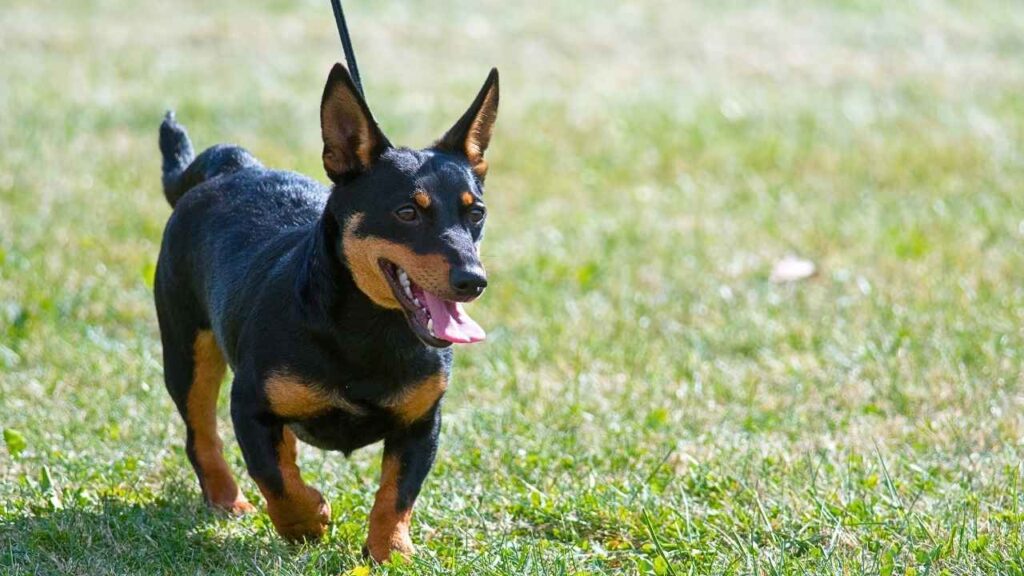
As a family dog, the Lancashire Heeler brings a lot to the table. They’re alert, comical, deeply loyal, and devoted to their people. They form close bonds quickly and thrive on being part of the daily action. Whether you’re hanging out in the yard or binge-watching your favorite series, they want in on the fun.
Now, here’s where things get interesting—they’ve got a mischievous streak. Heelers are clever little problem-solvers and often too smart for their own good. Leave one unsupervised with nothing to do, and they’ll find their own entertainment… like figuring out how to open your pantry door.
They’re also extremely observant. You might not even notice a pattern in your daily routine, but your Lancashire Heeler will. From the sound of your alarm clock to the time you grab your keys, they’re tracking it all. This makes them easy to train, but also a little nosy.
Socialization is key with this breed, and they like human interactions, says AKC. They can be a bit reserved with strangers and other dogs, so early and positive introductions make a big difference. Once they’re comfortable, though, they’re incredibly affectionate and often develop a clownish side that keeps the whole house laughing.
Because they were bred for both herding and vermin control, they’ve got a sharp prey drive and a natural instinct to nip at heels. With kids, this usually comes out as playful herding behavior, but it should be redirected early so it doesn’t become annoying or confusing. They’re quick learners, so consistency goes a long way.
Fun Fact:
The Lancashire Heeler is so rare, it was once at risk of extinction. Even today, they’re considered a vulnerable native breed in the UK. So owning one? It’s like having a little piece of living history curled up at your feet.
6. Old English Sheepdog
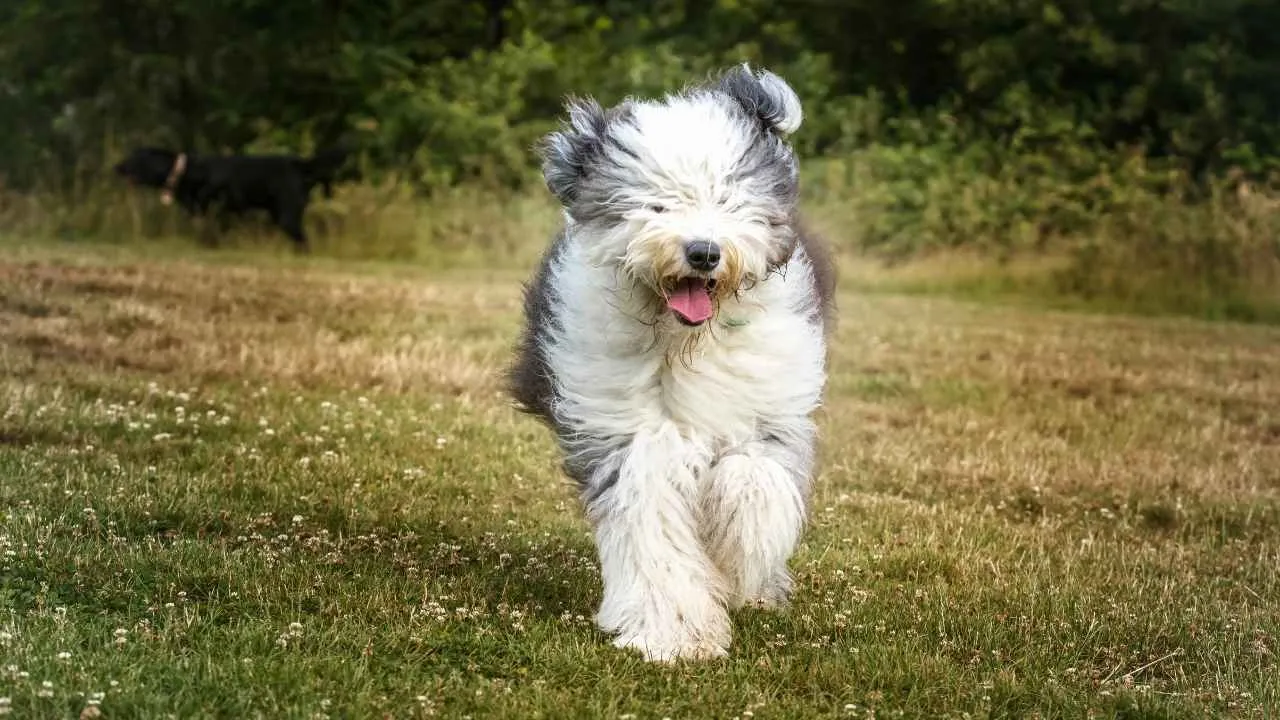
Big, shaggy, and impossible to ignore—the Old English Sheepdog is like a walking cloud with a heart of gold. Originally bred to drive cattle and sheep to market in the English countryside, this breed is known today as one of the most iconic and lovable family dogs around.
First thing you’ll notice? That thick, tousled coat and a rear that wiggles when they walk—it’s basically their signature move. But behind all that fluff is a clever, devoted dog who thrives in a family setting, Britannica. They’re loyal, loving, and just the right amount of goofy to keep everyone entertained.
Although they’re large dogs, they’re surprisingly mellow indoors. They won’t be bouncing off the walls like some high-strung breeds. Instead, they enjoy moderate activity—walks, play sessions, and maybe a romp in the backyard. You won’t need to run marathons, but they do need daily movement to stay happy and healthy.
Training? They’re bright and eager to please, but here’s the kicker—they can be a little stubborn. It’s not that they don’t understand what you’re asking. Sometimes, they’re just weighing whether they agree with your plan. Use patience, positive reinforcement, and maybe a bit of humor—it goes a long way with these shaggy thinkers.
Now let’s talk barking. Unlike many dogs, they’re not excessive barkers, but they are alert. That herding instinct still lingers, so they’ll likely announce any unusual activity with a deep, booming woof. It’s part watchdog, part “just making sure you heard that too,” and it usually fades once they know things are safe.
Fun Fact:
Despite their huge size, Old English Sheepdogs are famously quiet movers. Farmers once called them “bobtails” and used them to silently drive cattle without spooking the herd. Stealth mode? Activated.
7. Shetland Sheepdog
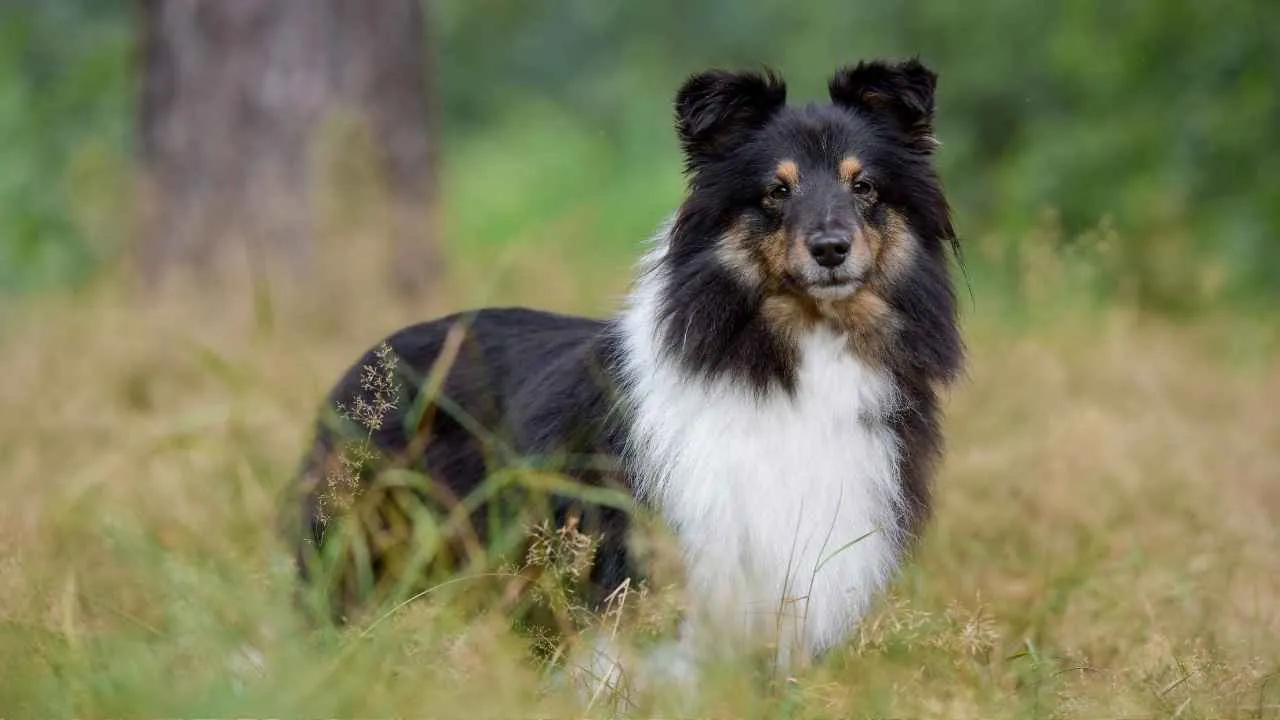
Meet the Shetland Sheepdog—aka the Sheltie—the miniature herding marvel with the heart of a lion and the loyalty of a shadow. Developed on the rugged Shetland Islands of Scotland, this pint-sized pup was developed to herd sheep in tough terrain and harsh weather. And trust us, they still carry that hardy, hardworking spirit.
Despite their graceful, almost dainty appearance, Shelties are intensely driven and whip-smart. They live for learning and pick up commands faster than you can say “sit.” If you’re the type who enjoys training games or agility courses in the backyard, this dog will be your ride-or-die partner.
At home, Shelties are affectionate and deeply bonded to their people, says Purina. They’re not the type to run off and do their own thing—they want to be wherever you are. Whether it’s following you from room to room or gently curling up at your feet, they’re always close.
Now, here’s something worth noting—they’re incredibly in tune with emotions. Seriously, they can sense tension, excitement, sadness… even before you say a word. Some Sheltie owners swear these dogs make better therapists than actual people. Need an emotional support sidekick who can also fetch the paper? Done.
Shelties are known for their signature vocality. Got a squirrel in the yard? They’ll alert you. Doorbell rings? You’ll know. But their bark is more about excitement than aggression. Still, early training is essential to teach them when to speak and when to zip it. A quiet Sheltie is possible—promise.
Fun Fact:
Shetland Sheepdogs often “smile” with their eyes. Their almond-shaped eyes and expressive brows give them a surprisingly human look—one that seems to say, “I know what you’re thinking… and I agree.”
8. Spanish Water Dog
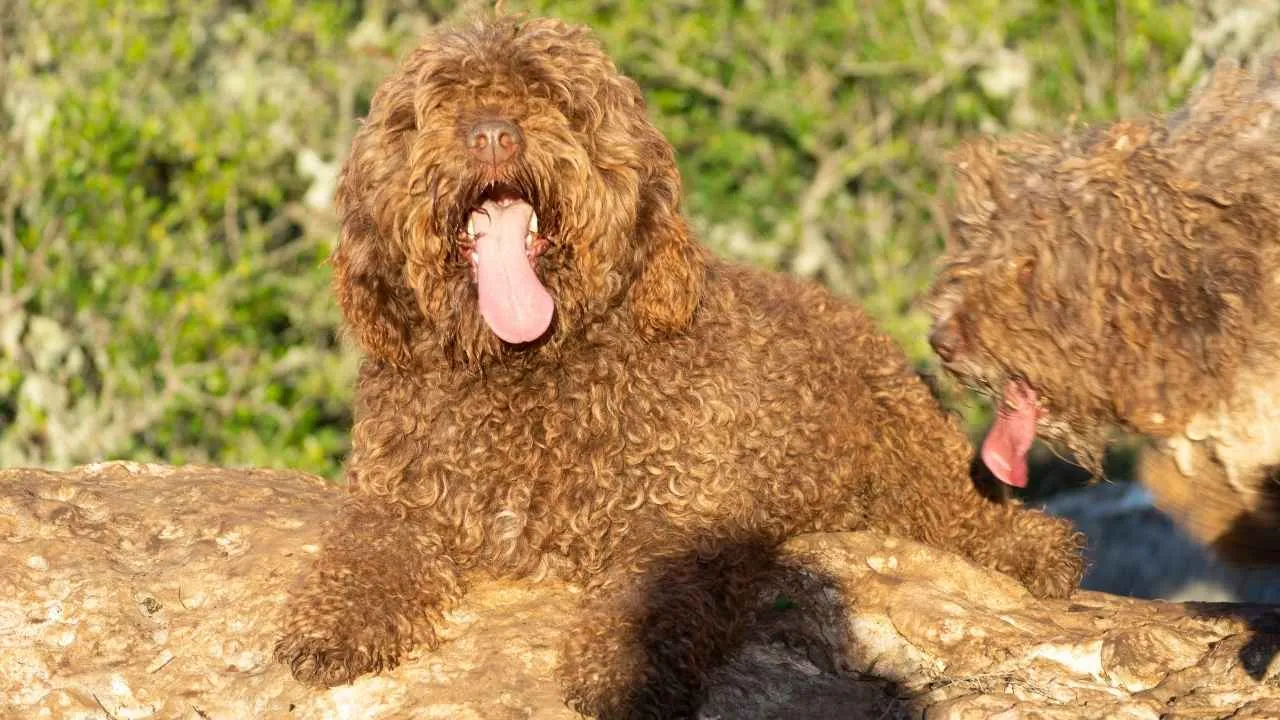
Looking for a herding dog that’s tough, smart, and curly-coated? The Spanish Water Dog might just be the most underrated family companion you’ve never heard of. Originally bred to herd livestock, retrieve from water, and even guard the homestead, this breed is a rugged multitasker with serious brains.
What makes them stand out instantly is their unique, woolly coat—it’s naturally curly and forms cords over time if left untrimmed. Not just for looks, though. That coat was made to resist dirt, water, and weather on Spanish farms and fishing boats, says PetMD. It’s a wash-and-wear style that suits their working-dog roots.
Got an active lifestyle? Perfect. Spanish Water Dogs love to be moving, solving puzzles, and working their minds. Whether it’s hiking, herding, dock diving, or obedience games in the yard, they thrive when they’ve got a job. This is not your average couch potato breed—they want purpose and adventure.
They’re excellent with kids and can be protective in a calm, composed way. You’ll often see them gently watching over playtime or trotting behind your toddler like a fluffy little security guard. And no, they don’t overreact—they just like to be in the loop when it comes to their people.
Their coat may look high-maintenance, but it’s actually pretty low-maintenance —no brushing required. Instead, it’s either kept trimmed short or left to cord naturally. Bathing is minimal, and shedding is practically nonexistent. That said, you do need to learn the specific grooming method, which is totally different from typical double coats.
Fun Fact:
The Spanish Water Dog has webbed feet! This makes them natural swimmers and explains their historical role assisting Spanish fishermen. Herding livestock by day, diving for ropes by afternoon? Total overachiever.
9. Swedish Vallhund

Think of the Swedish Vallhund as the Vikings’ little herder—literally. This ancient breed dates back over a thousand years and was a trusted farm dog of the Norse people. Compact, tough, and full of spirit, the Vallhund is a no-nonsense worker with a serious love for family life.
This low-set, long-bodied breed may remind you of a Corgi, but it’s got its own thing going on. Bred in Sweden for herding cattle across open fields, Vallhunds are agile, alert, and tireless, says CKC. Their sturdy build makes them surprisingly quick and nimble—ideal for zigzagging behind livestock or kids on scooters.
One of their biggest strengths in a home setting? Their eagerness to be involved. These dogs don’t just want to be near you—they want to do things with you. Whether it’s a car ride, a walk, or helping you “supervise” a DIY project, Vallhunds are the ultimate sidekicks.
They’re especially good with children and often form tight bonds with them. You might catch them gently nudging a kid back toward the yard gate or sitting watchfully near the sandbox. They’ve got that natural herding instinct paired with a calm, confident demeanor—it’s like a built-in babysitter with paws.
Another great thing? Their grooming needs are super manageable. Vallhunds have a dense, weather-resistant double coat that sheds seasonally, but regular brushing keeps it under control. No trimming or complicated grooming sessions required—just a good slicker brush and a vacuum you trust.
Fun Fact:
The Swedish Vallhund can be born with a full tail, stub tail, or no tail at all—and all of them are considered correct for the breed. It’s one of the few herders where tail length is a genetic lottery!
Conclusion
Family herding dog breeds are more than just expert farm dogs—they’re devoted, high-energy companions that form strong bonds with their human companions and thrive as family pets. Originally bred to herd livestock like cattle, sheep, and other animals, many herding dogs—including the Australian Cattle Dog, Pembroke Welsh Corgi, Border Collie, and German Shepherd—have evolved into versatile, incredibly affectionate family dogs. These dogs require consistent mental and physical stimulation, making them ideal for active households with small children and other pets.
Known for their sharp intelligence and need for regular exercise, breeds like the Miniature American Shepherd, Polish Lowland Sheepdog, and Entlebucher Mountain Dog excel in agility training, obedience training, and various dog sports. Many herding dogs also make excellent watchdogs thanks to their protective nature and loud bark. Some, like the Belgian Malinois and Bouvier des Flandres, even serve in military service.
From the icy pastures of the Swiss Alps and Scottish Highlands to modern backyards across the globe, breeds like the Canaan Dog, Old English Sheepdog, Rough Collie, and Australian Shepherd continue to protect livestock, herd sheep, and adapt to other livestock with ease. Whether you’re drawn to the blue merle coat of the Aussie, the red merle of the Collie, or the gentle giant nature of the Great Pyrenees, there’s a herding breed for every lifestyle. Recognized by the American Kennel Club, even lesser-known dogs like the Cardigan Welsh Corgi, Icelandic Sheepdog, and Belgian Sheepdog offer something special.


